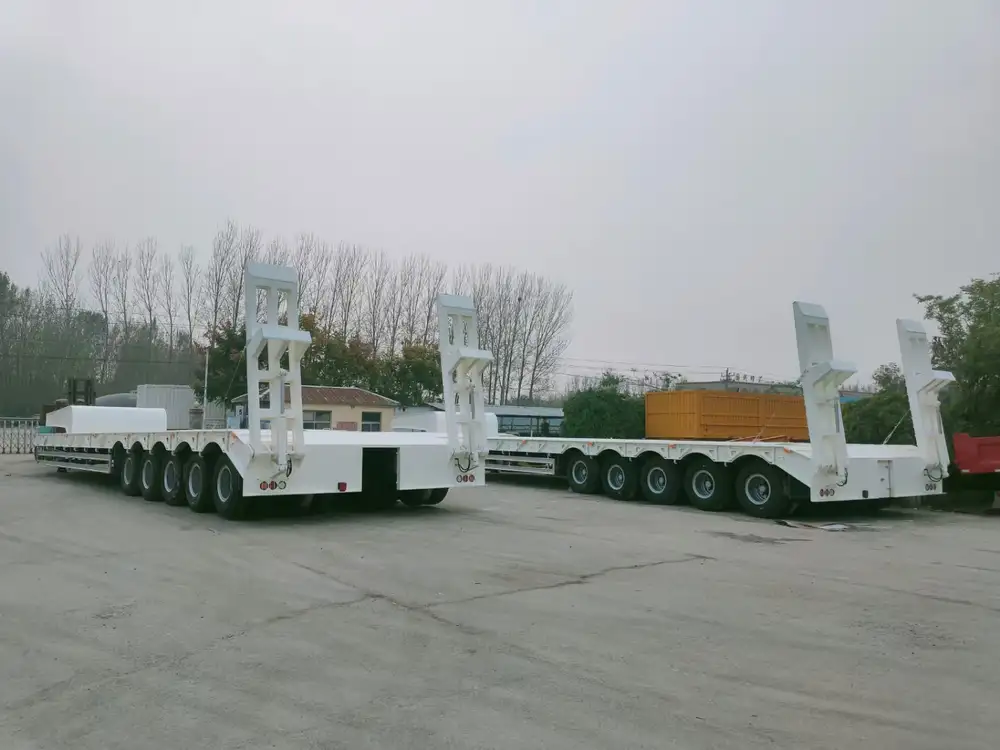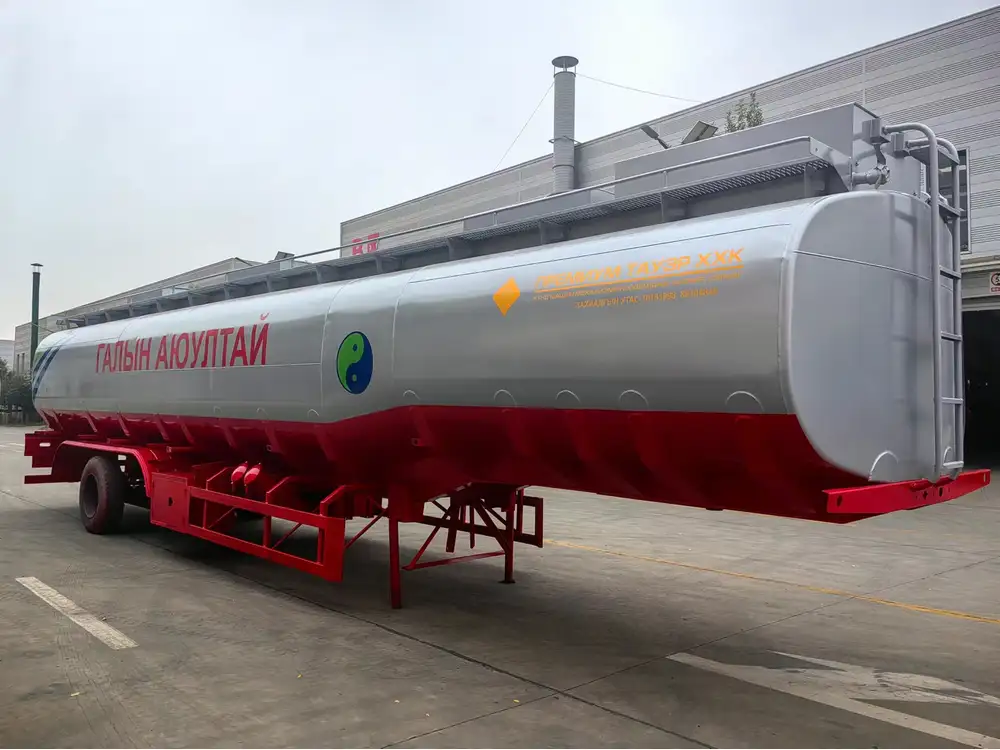In the realm of transportation logistics, understanding semi-trailer load capacities is crucial for manufacturers, suppliers, and logistics professionals. The semi-trailer is a ubiquitous vehicle type used for hauling goods across vast distances. Their design allows for versatility, enabling them to transport various types of cargo, including agricultural products. One common query in the industry is: How many bushels can fit in a semi-trailer? This article delves into the intricacies of semi-trailer capacities, focusing particularly on bushel measurements for grain and other bulk materials.
Semi-Trailer Dimensions and Types
To understand bushel capacity, we must first examine the dimensions of typical semi-trailers.
Standard Semi-Trailer Dimensions
| Dimension | Measurement |
|---|---|
| Length | 48 to 53 feet |
| Width | 8.5 feet |
| Height | 13.5 feet |
Note: Height can vary based on the type of trailer and its specific cargo requirements.

Types of Semi-Trailers
- Flatbed Trailers: Ideal for transporting heavy loads that do not require a covered top, such as construction materials.
- Van Trailers: The most popular type, enclosed, and ideal for various goods, providing protection from environmental elements.
- Refrigerated Trailers (Reefers): Designed for transporting perishable items under controlled temperatures.
- Tanker Trailers: Used for carrying liquids, including chemicals, fuels, and food-grade items.
- Dump Trailers: Equipped for unloading bulk materials quickly, often used in construction.
Understanding Bushels
A bushel is a unit of volume that varies based on the type of material being measured. In agriculture, it is commonly used for grains, seeds, and vegetables.
| Product | Weight per Bushel |
|---|---|
| Corn | 56 pounds |
| Wheat | 60 pounds |
| Soybeans | 60 pounds |
| Oats | 32 pounds |
Note: Weight can vary based on moisture content and specific variety.
Calculating Semi-Trailer Capacity in Bushels

Step-by-Step Capacity Calculation
- Identify the Semi-Trailer Type: Determine whether you’re using a standard van trailer or a specialized type like a grain trailer.
- Measure Internal Dimensions: Calculate the internal cubic feet of the trailer.
Convert Cubic Feet to Bushels:
[ \text{Bushels} = \frac{\text{Cubic Feet}}{1.2445} ]1 bushel = 1.2445 cubic feet.
Example Calculation
Let’s illustrate this with a common flatbed trailer measuring 53 feet long, 8.5 feet wide, and 13.5 feet high.
Cubic Feet Calculation:
[ \text{Cubic Feet} = 53 \times 8.5 \times 13.5 = 6,116.25 \text{ cubic feet} ]Conversion to Bushels:
[ \text{Bushels} = \frac{6,116.25}{1.2445} \approx 4,907 \text{ bushels} ]
Physical Limitations and Practical Considerations
While the theoretical calculation gives an estimate of bushel capacity, physical limitations such as weight distribution, loading methods, and material compaction also play a significant role. To optimize the load, it is critical to consider the following:
- Weight Limitations: Semi-trailer weight limits are typically around 80,000 pounds, factoring in both the load and trailer weight.
- Material Density: Denser materials will take up less space in bushels than lighter materials, affecting the overall capacity.
- Environmental Regulations: Compliance with regulatory requirements regarding load size and weight can impact how fully a trailer can be loaded.

Bushel Measurement Conversion
For logistics companies, understanding how to convert bushels to other measurements is vital.
Quick Reference Table
| Measurement | Corn | Wheat | Soybeans |
|---|---|---|---|
| 1 Bushel | 1.25 cubic feet | 1.2 cubic feet | 1.2 cubic feet |
| 1 Truckload | ~ 25,000 lb | ~ 26,000 lb | ~ 27,000 lb |
| 1 Semi-Trailer | ~ 4,900 to 5,500 bushels | ~ 4,800 to 5,500 bushels | ~ 4,800 to 5,200 bushels |
Common Misconceptions About Bushel Measurements

1. Weight vs. Volume
Many people mistakenly equate bushel measurements solely with weight. It’s essential to understand that a bushel is a measurement of volume, not weight. Thus, the weight of a bushel can vary significantly depending on the type of grain, moisture content, and other factors.
2. Full Capacity Usage
Just because a trailer has the capability to carry 5,000 bushels theoretically, it does not mean that it is practical or legal to load it to that extent. Always consider weight limits and loading regulations when planning transportation.
The Role of Technology in Maximizing Load Capacity

Advanced Measuring Tools
The use of technology in measuring and optimizing load capacity has been a game changer in the logistics industry. Digital measuring tools and software can provide accuracy in load specifications, ensuring compliance and efficiency.
Data Analytics for Optimization
Through data analytics, logistics companies can monitor historical data to determine the optimal loading strategies and protect against overloading. This data-driven approach helps companies save costs and avoid penalties for non-compliance with transport regulations.
Conclusion: Making the Most of Your Semi-Trailer Capacity
Understanding how many bushels can fit in a semi-trailer is not merely a matter of simple calculations. It requires consideration of various factors, including trailer types, dimensions, product characteristics, and legal restrictions. By employing advanced technology and adhering to best practices in load management, manufacturers and logistics providers can optimize their semi-trailer operations effectively.
Investing time in understanding these complexities can yield significant benefits, including reduced transportation costs, improved efficiency, and enhanced compliance with industry regulations. Whether you’re transporting grains, seeds, or other bulk materials, knowing your semi-trailer capacity—and maximizing it effectively—will undoubtedly enhance your operational success.



